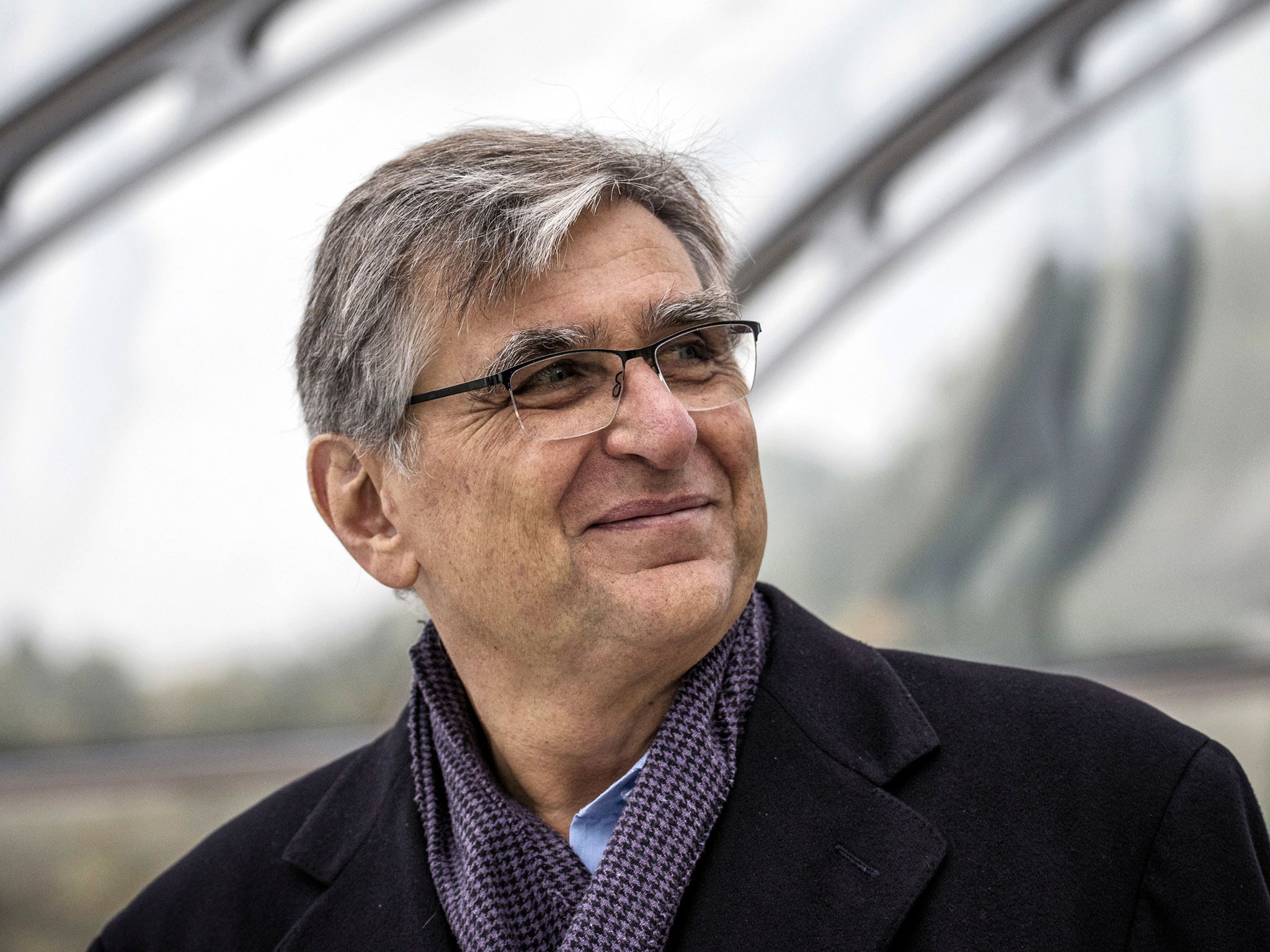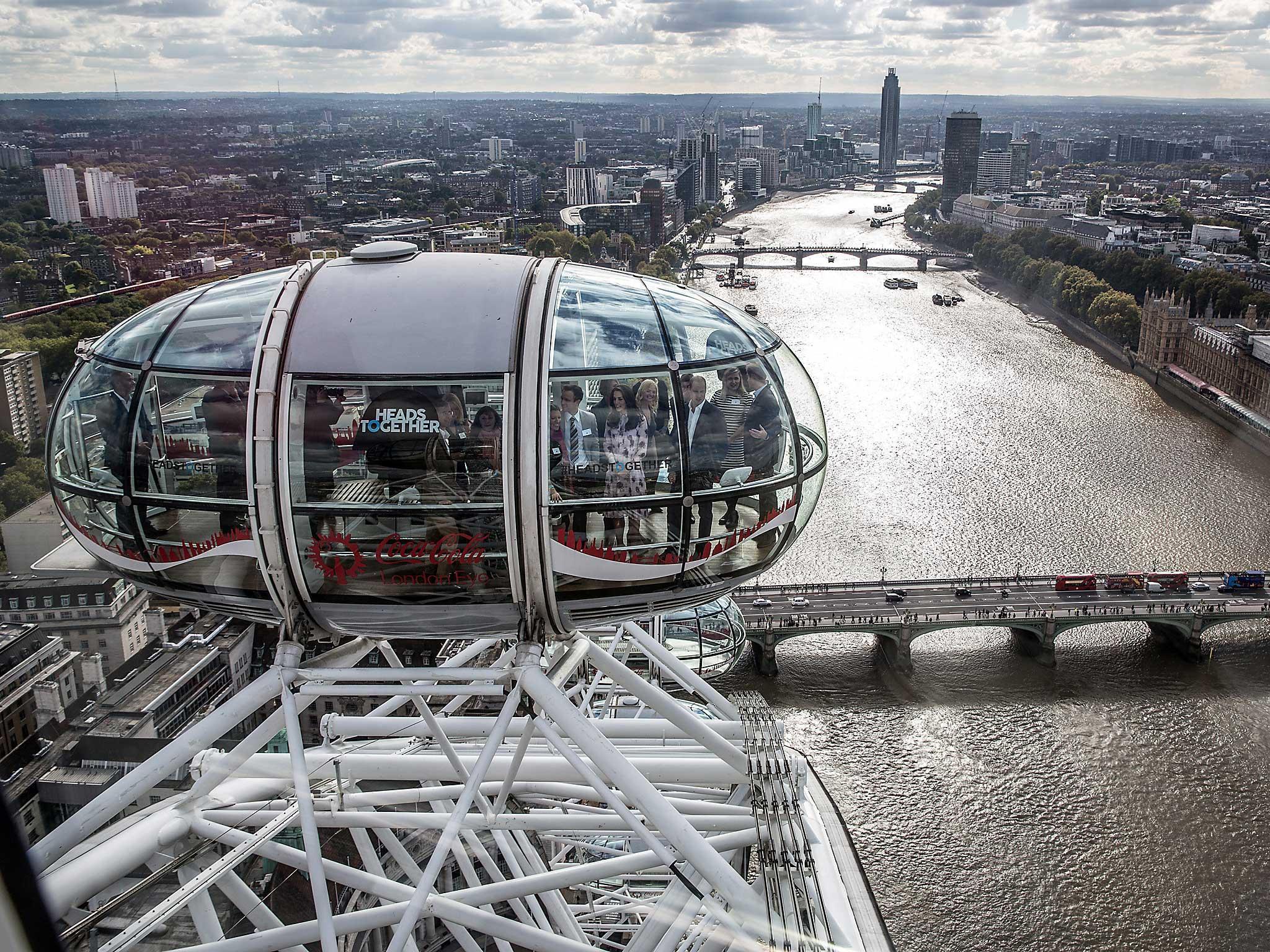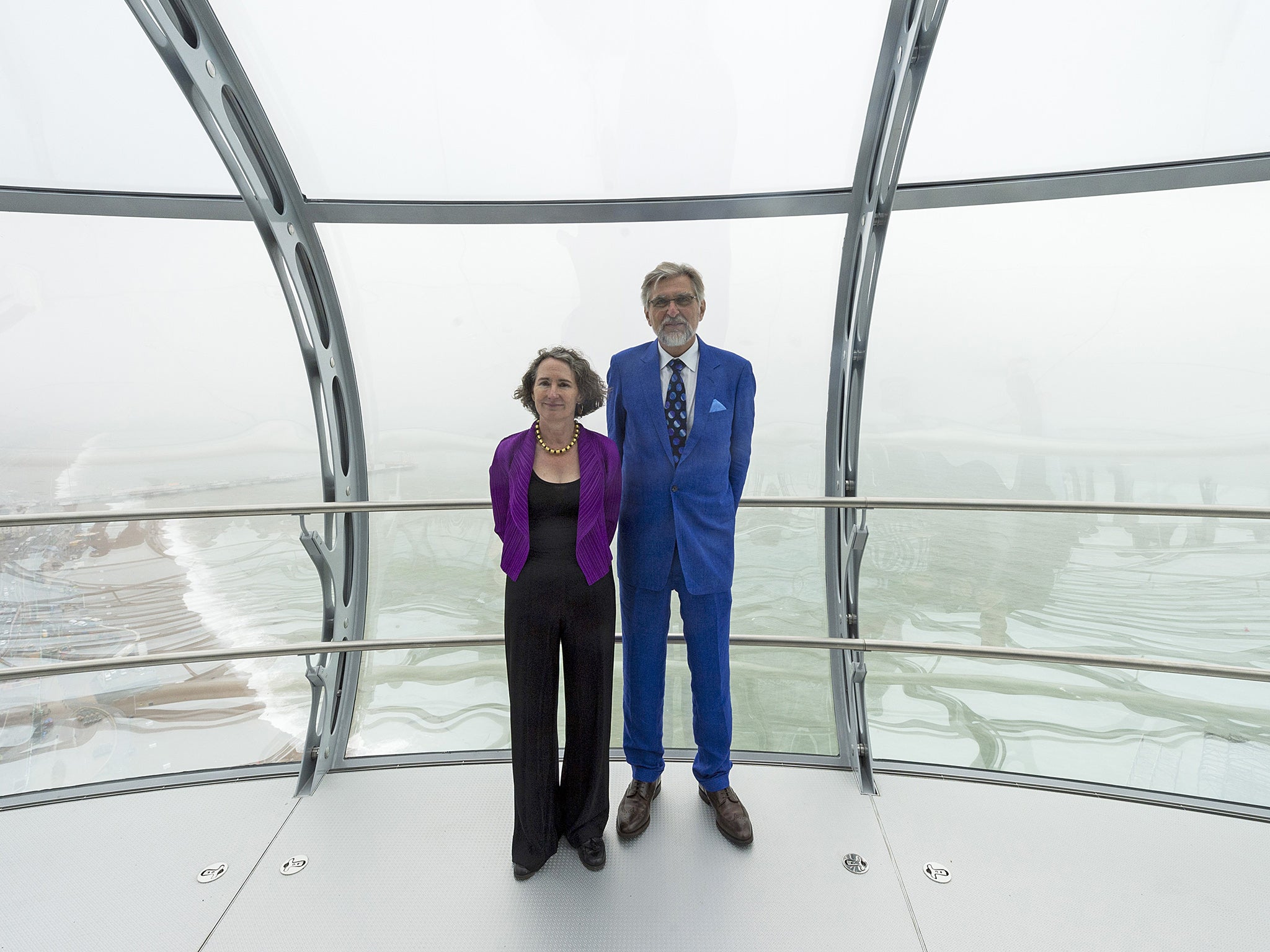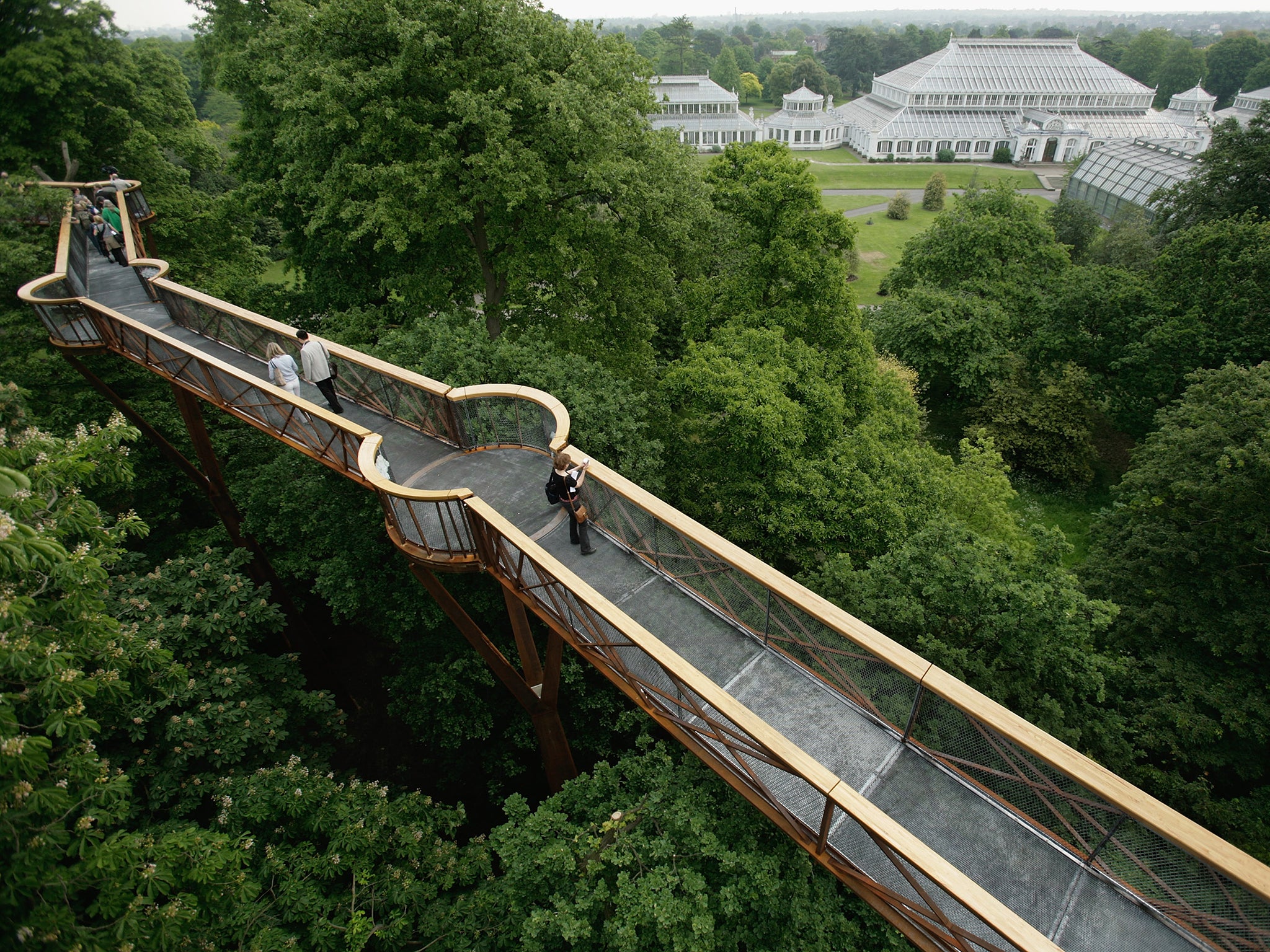David Marks: Architect behind the London Eye and Kew’s Treetop Walkway
A determined innovator, his other credits include the i360 in Brighton and an eco-friendly mosque under construction in Cambridge

Your support helps us to tell the story
From reproductive rights to climate change to Big Tech, The Independent is on the ground when the story is developing. Whether it's investigating the financials of Elon Musk's pro-Trump PAC or producing our latest documentary, 'The A Word', which shines a light on the American women fighting for reproductive rights, we know how important it is to parse out the facts from the messaging.
At such a critical moment in US history, we need reporters on the ground. Your donation allows us to keep sending journalists to speak to both sides of the story.
The Independent is trusted by Americans across the entire political spectrum. And unlike many other quality news outlets, we choose not to lock Americans out of our reporting and analysis with paywalls. We believe quality journalism should be available to everyone, paid for by those who can afford it.
Your support makes all the difference.David Marks was a forward-thinking architect who, with his wife, Julia Barfield, co-designed the London Eye and the innovative and breathtaking i360 tower on the Brighton seafront among others.
Both of these architectural achievements, which have altered the skylines in which they sit, encountered innumerable problems, but the couple’s resilience and determination to succeed, and Marks’ ability to seek resolution through reasoned argument and calm persuasion, saw them vanquish the doubters.
The pair shot to fame with their ambitious project to construct a giant Ferris wheel on the South Bank of the Thames to mark the millennium. Opening in 2000, with an initial five-year planning permit as a temporary structure, the London Eye quickly became one of the capital’s most popular tourist attractions, welcoming more than 3 million visitors a year. It went on to receive 25 awards for design, innovation, engineering and tourism.
At the time of Marks' death, aged 64, Marks Barfield Architects was undertaking the construction of a stunning new £17m eco-mosque in Cambridge, due to open next year.
Born in Stockholm, Sweden, in 1952, David Joseph Marks was the son of Jewish émigré, Melville, a journalist at the UN and film producer from Manchester; Melville also assisted Holocaust survivors to reach Palestine, served as a Mossad agent in Turkey, and later helped found the Montreux television festival. Melville became a truly inspirational figure for David; his motto “never take no for an answer” formed a frontispiece to a book on the history of the London Eye. His mother Gunilla (née Lovén), a Swede, was an artist.
Marks’s childhood and schooling were spent in Geneva, where he developed an early love of the mountains and skiing, a pursuit rekindled after visiting Poma, the French company that made the pods for the London Eye and also the new super pod for the i360.

He then moved to London in 1972 to study at the Architectural Association (AA), formerly Kingston Polytechnic. Here, he met wife-to-be Julia, also a student, while squatting in a house in Stockwell, south London.
Marks later recalled, “Julia moved into the pub over the road and I fell in love with her straight away. She was with someone else, but eventually we got together and went off travelling.”
During their course, the like-minded couple spent a year in South America, seven months of which was spent in Lima, Peru, designing and building a community centre and working on improving the housing in a squatter settlement. They married in 1981 and bought the Stockwell house in which Marks had been squatting, eventually turning it into a zero-carbon home.
Back at the AA, they helped build a few Fuller-style domes and other structures as part of the school’s lightweight-structures research unit.
On graduation, Marks started work for architect Richard Rogers, who had worked on the Pompidou Centre, Paris, and Millennium Dome, and was involved on the Inmos factory project in Newport, south Wales, and the Lloyds building in London. Barfield also spent seven years working in the offices of Sir Norman Foster.
Having learned a huge amount during “a period of phenomenal growth and innovation (at the practice), working as a team and learning the importance of analysis and thinking through problems and solving them with a minimum of means and resources,” in 1989, Marks and Barfield decided to establish their own practice. Initially working from their garden shed, they focused on house extensions.
After winning a major competition for a £35m technology centre in the Thames Valley, they were encouraged to set-up more prestigious, professional offices, with all of the overheads (and a crippling mortgage), only to see the project become a victim of the recession of the early 1990s.
Barfield recalled: “Architecture is like that – ups and downs. We went in for a [Sunday Times] competition to design a London landmark for the millennium as a way of cheering ourselves up.”
Initially thinking of a tower, they rejected the idea because of possible comparisons to Gustave Eiffel’s Parisian landmark. Thus, they proposed a reinvented fairground Ferris wheel “to get people up high easily, efficiently and effortlessly”.
It was to be lightweight in structure, larger than any previously built, twice as tall as the original Ferris wheel in Chicago, but only half the weight, and located at Hyde Park, site of the 1851 Great Exhibition. Barfield suggested the south bank of the Thames in the heart of London, where the Festival of Britain had been sited in 1951. He agreed. For Marks, it was also to be a nod to some of his engineering heroes, including Isambard Kingdom Brunel, Eugenius Birch and Joseph Paxton.
The competition, however, came to nought. Nobody won and Marks said, “We were narked. We had a great idea and no one was going to see it.”
Unperturbed and against conventional advice, Marks Barfield decided to try to build their dream project themselves, re-mortgaging their home, and with the support of Bob Ayling, then head of British Airways, founded the Millennium Wheel Company. They spent the following six years gathering financial, public and political support, resolving engineering and logistical challenges and weathering considerable opposition, as well as convincing numerable organisations, from County Hall to the Port Authority.

Doubters including Lord St John of Fawsley, chairman of the Royal Fine Art Commission, was “incredibly rude”, and informed them that the Eye would “ruin London”.
After two years of bureaucracy, permission was secured but then they had to raise the £85m to build the Eye. Most of the funding came from BA and Tussauds, which owned a third each. The sale left the couple with £10m; for the first time they were solvent and did not have financial worries.
After reducing the initial number of pods from 60 to 32, the contractor claimed that £10m would need to be saved, and produced his own design changes, which appalled Marks and which he refused. Another company was found, but this time they wanted to reduce the wheel’s height from 500ft to 443ft. Marks Barfield agreed.
Nevertheless, further setbacks occurred, including problems raising the structure, which was assembled horizontally on the River Thames on temporary floating islands, then hoisted to its vertical position. In front of the world’s media, a cable broke, preventing the wheel from being lifted. With BA as a sponsor, Virgin Atlantic stepped in quickly to ridicule the mishap; Richard Branson flew a balloon overhead with a banner declaring, “BA can’t get it up!”
The Eye was officially opened by Tony Blair on 31 December 1999; Marks and Barfield received MBEs in the New Year’s Honours List the following day.
Unlike Richard Rogers’ Millennium Dome, which cost nearly 10 times as much (in public lottery revenue) and was an instant white elephant, the Eye was an instant success. Marks had proved he was as skilled an entrepreneur as he was an architect, declaring, “I don’t know if people underestimated us, or we were just stubborn.”
Unfortunately, the couple’s London Eye involvement ended badly when they lost control of the project when their co-developers BA sold their stake in 2005, though they ensured that 1 per cent of revenues went to the local community in perpetuity.
By 2004, Marks had developed another eye-catching project with a design for the world’s tallest, and thinnest, vertical cable car with a moving viewing pod, sketching out the initial specifications on the back of a napkin. The idea had come after a balloon flight over the River Dordogne “[where] it was stunning to be floating in the air and taken along by the wind”.
Having visited numerous European cities, Brighton was considered the most welcoming for the project. Although planning was granted in 2006, the economic downturn halted development until 2014. The couple invested much of their profit from the London Eye into the £46m project with the council funding the balance. “What else would we do with the money? Buy a château or a yacht? That’s not us,” Marks explained.
The 568ft BA-sponsored i360, or “vertical pier” as it has been dubbed, opened in 2016, and supports a sculpted, doughnut-shaped pod, with glass windows and a reflective mirrored underside, capable of taking 200 people at a time skyward to magnificent views of up to 26 miles on a clear day.
Further i360s around the world have been muted. However, Marks Barfield, who were the majority shareholders of i360 with around 80 per cent of the equity, have patented the design, and promised that there would not be ‘a cookie-cutter approach’.

Always socially conscious, Marks was passionate about the potential of architecture to improve people’s lives.
Over the years, the practice continued to design uplifting projects in the leisure, housing, transport, education and cultural sectors, including the Treetop Walkway at Kew (18m high and 200m long), the Tintagel Bridge, Cornwall, and the University of Cambridge Primary School – a flagship university training facility and free school. There are also plans afoot for a new Aerial Cable Car in Chicago, connecting the city’s Naval Pier to downtown Chicago.
Marks died at home after a long battle with cancer; he is survived by his wife and three children.
David Marks, architect, born 15 December 1952, died 6 October 2017
Join our commenting forum
Join thought-provoking conversations, follow other Independent readers and see their replies
Comments